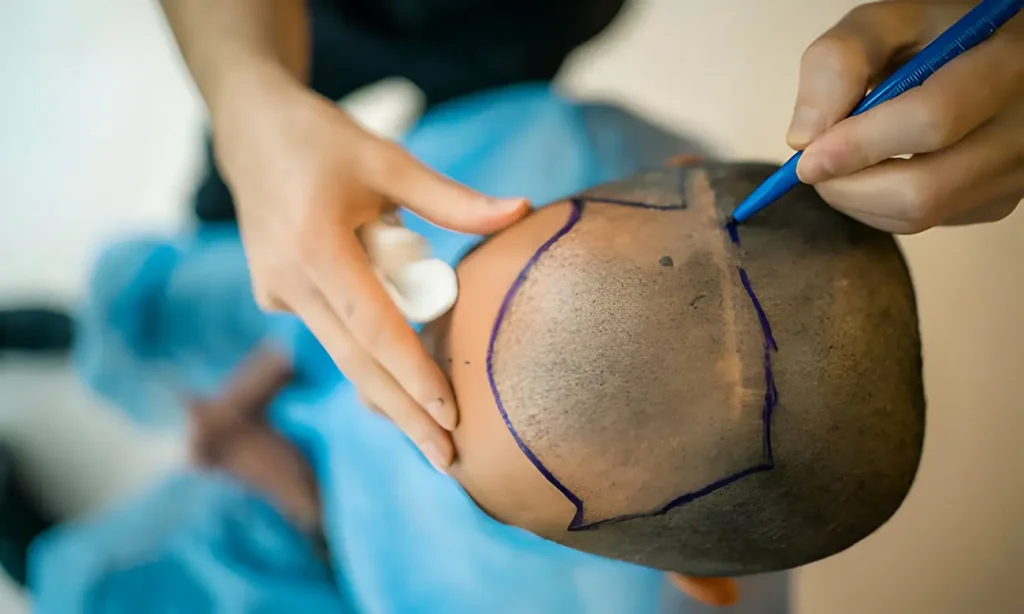Type and hit Enter to search
Experts in aesthetic surgery, dermatology, and beauty bring you the latest trends, research, and advice to help you make informed decisions about your appearance and health.
A web platform dedicated to aesthetic surgery, dermatology, and beauty, where expertise meets innovation, and your desires and needs become our mission. In a world where appearance and health go hand in hand, our platform leads the revolution, delivering the latest trends, research, and expert advice directly to you.
Our team consists of highly skilled professionals in the fields of aesthetic surgery and dermatology, committed to providing reliable information and guidance that will help you make informed choices about your appearance and well-being. We understand that every individual has unique needs and desires, which is why we approach each person with the utmost care and professionalism.
Powered by Aestetica Web Design © 2024
Are Grafts Secure After 1 Week? A Deep Dive into DHI and FUE Hair Transplant
So, you’ve just invested in a new head of hair, and now you're obsessing over every scab, every itch, and every pillowcase. The big question keeping you up at night: Are grafts secure after 1 week? No one wants their new hair taking an early vacation, right? Relax, let’s dive into the gritty details and find out when you can finally stop babying those precious follicles!
Are Grafts Secure After 1 Week? Understanding the Healing Process in DHI and FUE Hair Transplant Methods
Hair transplants have become a popular and effective solution for those experiencing hair loss, with the Direct Hair Implantation (DHI) and Follicular Unit Extraction (FUE) methods leading the charge. A common question among patients who undergo these procedures is, “Are grafts secure after 1 week?” Understanding the answer to this question is crucial for patients looking to protect their investment in hair restoration and ensure successful outcomes.
In this comprehensive analysis, we will explore the security of grafts after one week in both DHI and FUE procedures, shedding light on the healing processes, potential risks, and best practices for post-operative care. This guide is designed to help you make informed decisions during your hair restoration journey.
What is DHI and FUE Hair Transplantation?
Before delving into the question of whether grafts are secure after one week, it’s essential to understand the DHI and FUE hair transplant methods.
Follicular Unit Extraction (FUE): This technique involves the extraction of individual hair follicles from the donor area, typically the back of the head, using a micro-punch tool. The follicles are then implanted into the balding or thinning areas of the scalp. FUE is known for being minimally invasive, leaving no linear scars, and providing natural-looking results.
Direct Hair Implantation (DHI): DHI is a more advanced form of FUE where the extracted follicles are implanted directly into the scalp using a specialized tool called a Choi Implanter Pen. This pen allows the surgeon to control the angle, depth, and direction of the hair follicles, ensuring precise placement. DHI offers a higher level of control, potentially leading to better outcomes in some cases.
Now, let’s focus on the main question at hand: Are grafts secure after 1 week in these procedures?
The Healing Process: Week 1
Day 1-3: Initial Inflammation and Stabilization
Immediately after the DHI or FUE procedure, the scalp experiences trauma, causing inflammation and redness in both the donor and recipient areas. The first three days are crucial as the grafts settle into their new locations. During this period, the follicles are extremely vulnerable, and patients are advised to be exceptionally cautious with their scalp.
The body begins its natural healing process, forming tiny scabs around each graft. These scabs serve as protection while the grafts anchor themselves in the scalp. However, during these first few days, the grafts are not yet fully secure, and any significant friction or pressure on the scalp can dislodge them.
Day 4-7: Grafts Begin to Anchor
By the time you reach the one-week mark, the healing process is well underway. The question, “Are grafts secure after 1 week?” largely depends on how well the grafts have started to anchor in this critical phase. Generally, by the end of the first week, grafts are more stable than in the initial days, but they are not fully integrated into the scalp.
During this time, the body’s natural healing mechanisms are working to establish blood flow to the grafts. This process is essential for the long-term survival of the transplanted follicles. The scabs formed earlier begin to fall off naturally, and patients may notice some hair shedding. This is entirely normal and a part of the “shock loss” phase, where transplanted hairs temporarily shed before regrowing.
However, while the grafts are more secure by day 7, they are not entirely immune to external factors. Sudden impact, rubbing, or excessive pressure can still pose a risk to the grafts during this period.
Factors Influencing Graft Security After 1 Week
Whether the grafts are secure after one week depends on various factors, including:
Technique Quality: The skill and precision of the surgeon play a significant role in how well the grafts are placed and their initial stability. In DHI, the use of the Choi Implanter Pen allows for more precise placement, which may enhance graft security earlier in the healing process compared to traditional FUE.
Scalp Condition: The condition of the scalp also influences the healing process. Patients with healthier scalps may experience faster recovery and better graft anchoring.
Post-Operative Care: Following post-operative instructions is critical to graft security. Patients who avoid rubbing, scratching, or putting pressure on the grafted areas during the first week are more likely to have secure grafts by day 7.
Immune Response: The body’s immune response also impacts graft security. A well-functioning immune system helps the grafts integrate into the scalp tissue more effectively.
Post-Operative Care for Ensuring Graft Security
Proper care during the first week after a DHI or FUE procedure is essential to ensuring that grafts remain secure and viable. Here are some critical guidelines:
Avoid Touching the Scalp: Refrain from touching or rubbing the scalp. Even light scratching can dislodge grafts during the initial healing phase.
Follow Washing Instructions: Surgeons typically provide specific instructions on how to wash the scalp. Gentle washing with a specialized shampoo helps prevent infection and promotes healing without disturbing the grafts.
Sleep with Head Elevated: Sleeping with the head elevated during the first few nights helps reduce swelling and prevents grafts from being pressed against pillows, which could dislodge them.
Avoid Physical Activity: Strenuous exercise, bending over, or any activity that causes sweating should be avoided, as these can increase the risk of dislodging the grafts.
Stay Hydrated and Eat a Healthy Diet: Proper hydration and a nutrient-rich diet support the body’s healing process, which in turn helps the grafts to secure themselves more effectively.
When Are Grafts Fully Secure?
While the question “Are grafts secure after 1 week?” addresses an essential milestone in the healing process, it is important to note that grafts typically become fully secure around the two- to three-week mark. At this stage, the grafts are firmly anchored into the scalp, and the risk of dislodgement is significantly lower. By this point, patients can begin to resume more of their normal activities, although they should continue to follow their surgeon’s instructions for optimal healing.
So, are grafts secure after 1 week in DHI and FUE procedures? The answer is that grafts are more secure after one week than in the first few days post-operation, but they are not fully anchored yet. Patients must continue to take care of their scalp and follow all post-operative instructions to avoid any risks of dislodging the grafts during this crucial period.
Understanding the healing process and the steps needed to ensure graft security after one week is essential for achieving the best possible results from hair transplantation. Both DHI and FUE methods offer promising outcomes, but patient diligence in post-operative care is a key factor in determining the success of the procedure.
For those undergoing hair restoration, patience and careful attention during the first week can make all the difference in securing grafts and ensuring a long-lasting, natural-looking result.
Biography of Dr. Gorana Kuka Epstein
Dr. Gorana Kuka Epstein is a specialist in plastic and aesthetic surgery. She is a professor at the Miami University School of Medicine, a diplomate of the American Board of Hair Restoration Surgery, and a doctoral candidate at the Faculty of Medicine at the University of Novi Sad. Dr. Kuka Epstein is the founder and director of the FoundHair Training program, the founder of the Center for the Treatment of Female Hair Loss, the director of the research department at the Foundation for Hair Restoration in Miami, and the founder of the Dr. Gorana Kuka Foundation.
Reference





